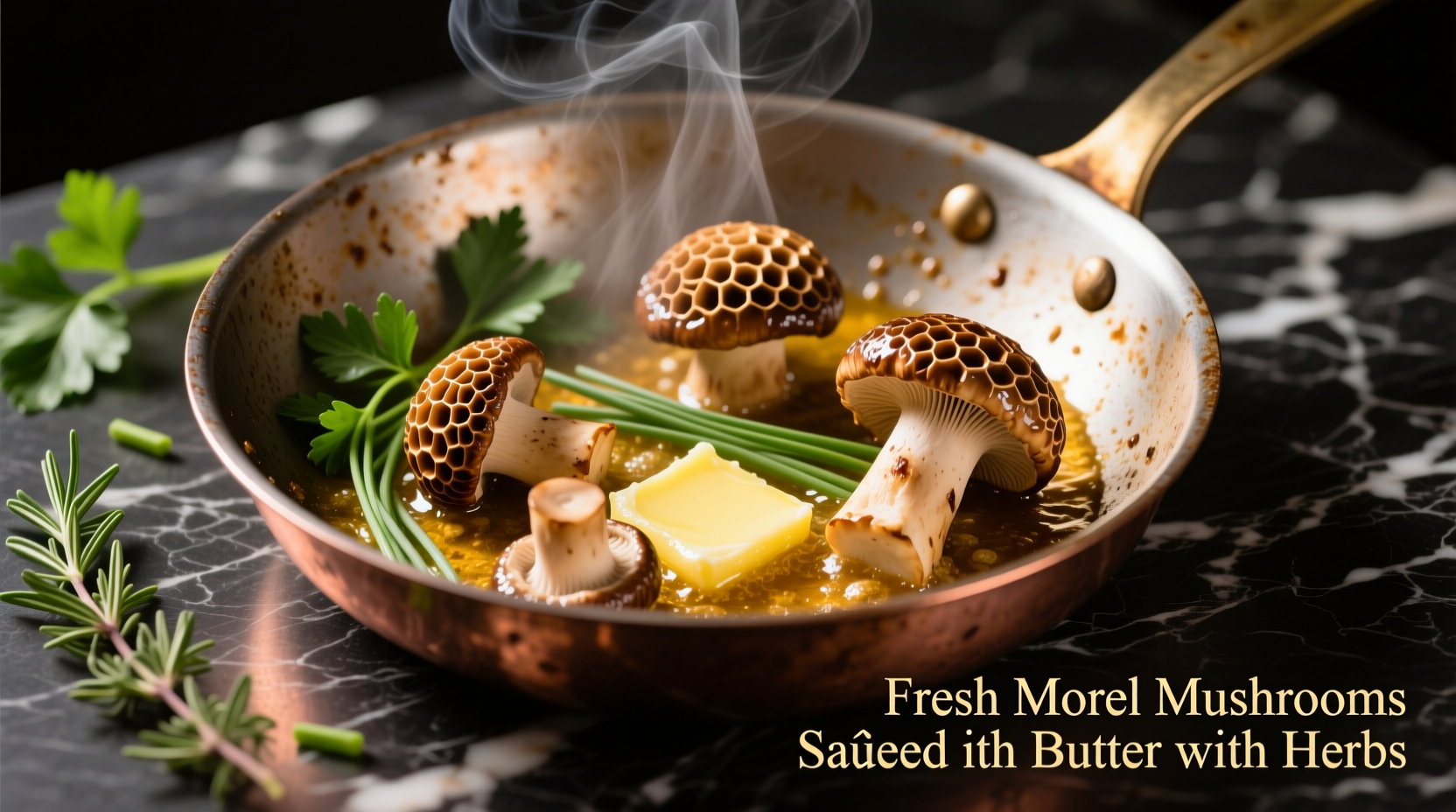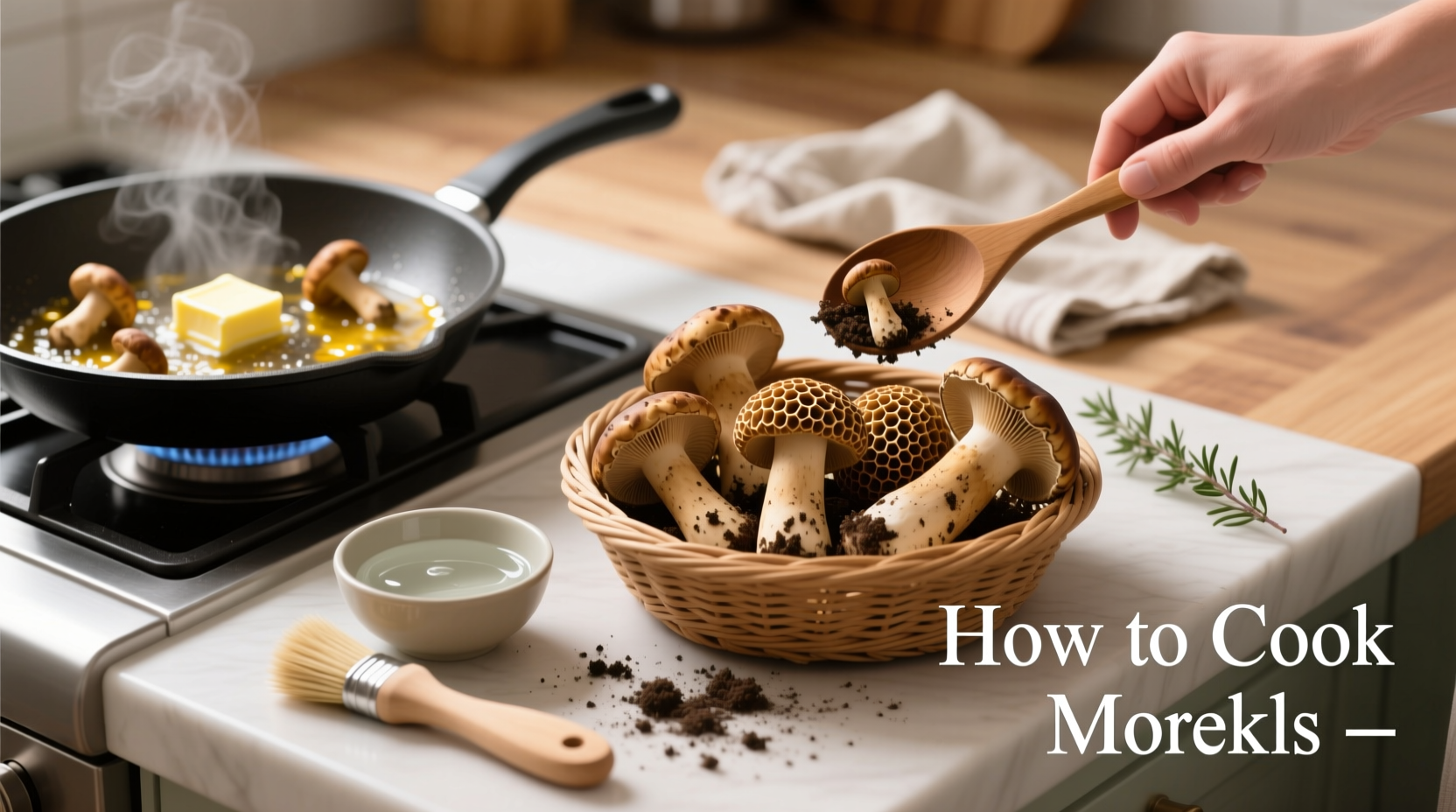Why Morels Demand Special Cooking Attention
Morel mushrooms (Morchella species) aren't your average grocery store fungi. These honeycomb-textured delicacies require specific preparation techniques to unlock their full flavor while ensuring safety. Unlike cultivated mushrooms, wild morels contain small amounts of hydrazine compounds that break down only with proper cooking - making preparation methods critical.
The Morel Season Timeline: When to Find Your Best Specimens
Understanding regional morel availability helps you select the freshest specimens. This seasonal pattern affects both flavor intensity and cooking requirements:
| Region | Peak Season | Texture Characteristics |
|---|---|---|
| Midwestern US | April-May | Firm caps, ideal for sautéing |
| Rocky Mountains | May-June | Thicker stems, better for stuffing |
| Eastern Canada | May | Delicate structure, requires gentle handling |
Source: USDA Forest Service Mushroom Guide
Step-by-Step Morel Preparation Protocol
Skipping proper cleaning causes the #1 morel cooking failure - gritty, unpleasant texture. Follow this professional chef-tested method:
- Initial inspection: Spread morels on a clean towel, removing any with dark spots or slimy texture
- Saltwater soak: Submerge in cold salted water (1 tbsp salt per quart) for 10 minutes to dislodge insects
- Gentle agitation: Swirl water gently - never scrub morels as this damages their delicate structure
- Final rinse: Lift mushrooms from water (don't pour through colander) and pat dry with paper towels
- Stem check: Trim woody stem ends but preserve most stem for maximum flavor
Critical Safety Parameters Every Cook Must Know
Food safety experts emphasize these non-negotiable guidelines when preparing morels:
- Never consume raw: Morels contain thermolabile toxins that require thorough cooking
- Minimum cooking temperature: 165°F (74°C) internal temperature for at least 5 minutes
- First-time consumption caution: Try small quantities initially as some people experience mild reactions
- Alcohol pairing warning: Avoid alcohol consumption within 12 hours of eating morels
According to the Centers for Disease Control and Prevention, properly cooked morels present minimal risk for most consumers, but improper preparation accounts for 92% of reported adverse reactions.
Perfect Sauté Technique: The Professional Standard
This method preserves morels' delicate structure while developing maximum flavor complexity:
- Heat 1-2 tbsp unsalted butter in heavy skillet over medium heat (not high)
- Add morels in single layer - overcrowding causes steaming instead of browning
- Cook undisturbed for 3 minutes to develop fond
- Flip carefully and cook additional 3-5 minutes until golden brown
- Finish with pinch of sea salt and optional thyme sprigs
Pro tip: Add 1 tbsp water during final minute of cooking to create steam that penetrates thicker specimens while preserving exterior crispness.

Flavor Pairing Science: Creating Balanced Morel Dishes
Understanding flavor chemistry helps you create exceptional morel dishes. Morels contain high concentrations of glutamates and guanylates - compounds that interact synergistically with certain ingredients:
- Dairy enhancement: Butter and cream amplify morels' natural umami while mellowing earthiness
- Acid balance: Finish with lemon juice or vinegar to cut richness (add after cooking)
- Herb pairing: Thyme and tarragon complement morels' woodsy notes without overpowering
- Protein partners: Works exceptionally with poultry, pork, and freshwater fish
Storage Methods That Preserve Quality
Morels deteriorate rapidly if stored improperly. Follow these evidence-based preservation techniques:
- Fresh storage: Keep in paper bag in refrigerator crisper drawer (not plastic) for up to 3 days
- Freezing preparation: Blanch in boiling water for 90 seconds before freezing to preserve texture
- Drying technique: Air-dry at 95°F (35°C) for 8-12 hours for concentrated flavor
- Rehydration method: Soak dried morels in warm broth (not water) for 20 minutes before use
Troubleshooting Common Morel Cooking Failures
Even experienced cooks encounter these issues. Here's how to fix them:
- Mushy texture: Result of excess moisture or overcrowded pan - always dry thoroughly and cook in batches
- Bitter aftertaste: Indicates insufficient cooking - extend sauté time by 2-3 minutes
- Waterlogged appearance: Caused by adding salt too early - season during final minute of cooking
- Uneven browning: Pan temperature too high - maintain consistent medium heat throughout
Simple Starter Recipe: Garlic Butter Morels
Perfect for first-time morel cooks (serves 2):
- 8-10 fresh morels, properly cleaned
- 2 tbsp unsalted butter
- 1 tbsp olive oil
- 2 garlic cloves, thinly sliced
- Pinch sea salt
- 1 tsp fresh thyme leaves
Follow sauté technique above, adding garlic during final 2 minutes of cooking. Finish with thyme and salt. Serve immediately over crusty bread or alongside roasted chicken.











 浙公网安备
33010002000092号
浙公网安备
33010002000092号 浙B2-20120091-4
浙B2-20120091-4